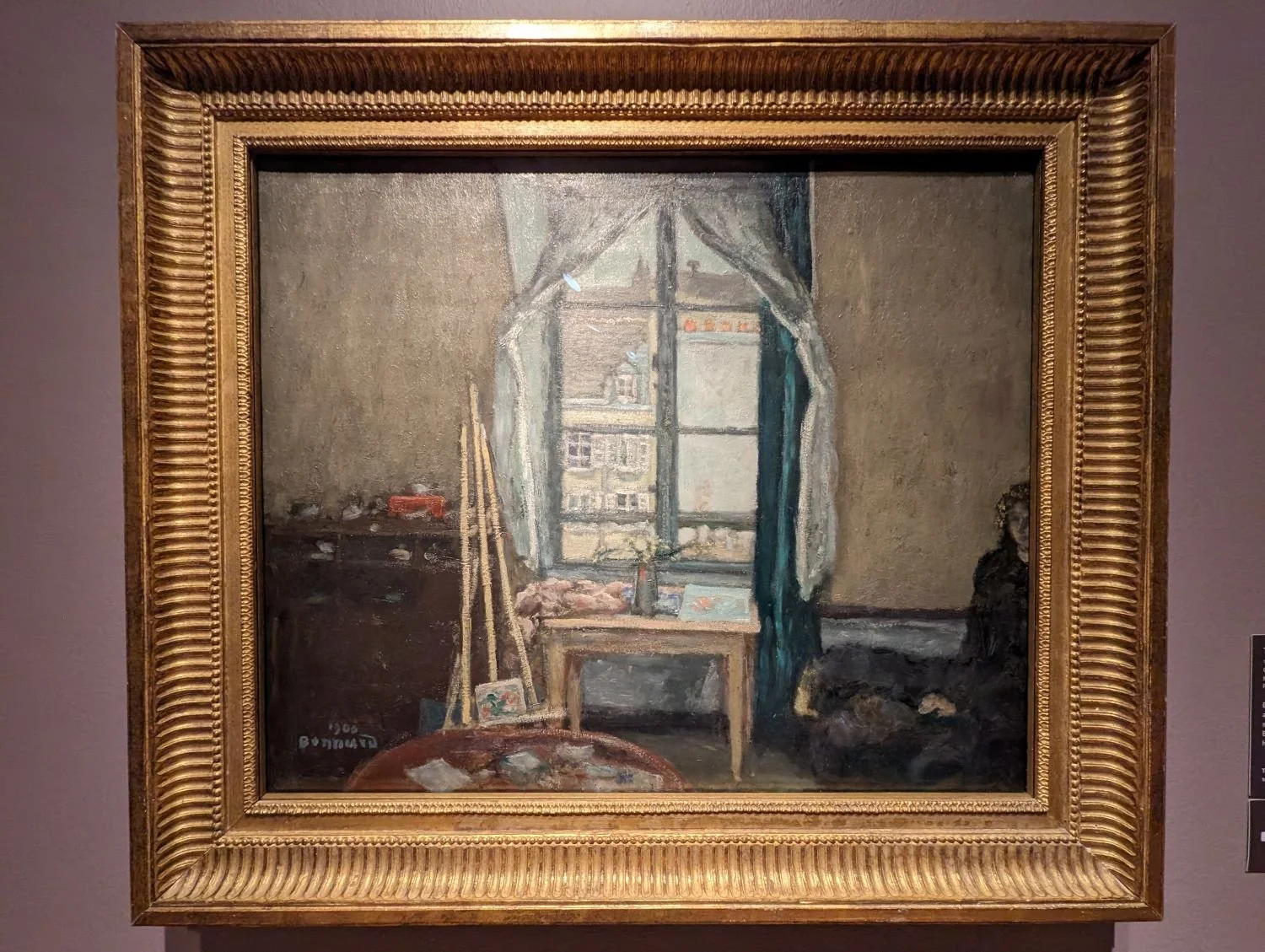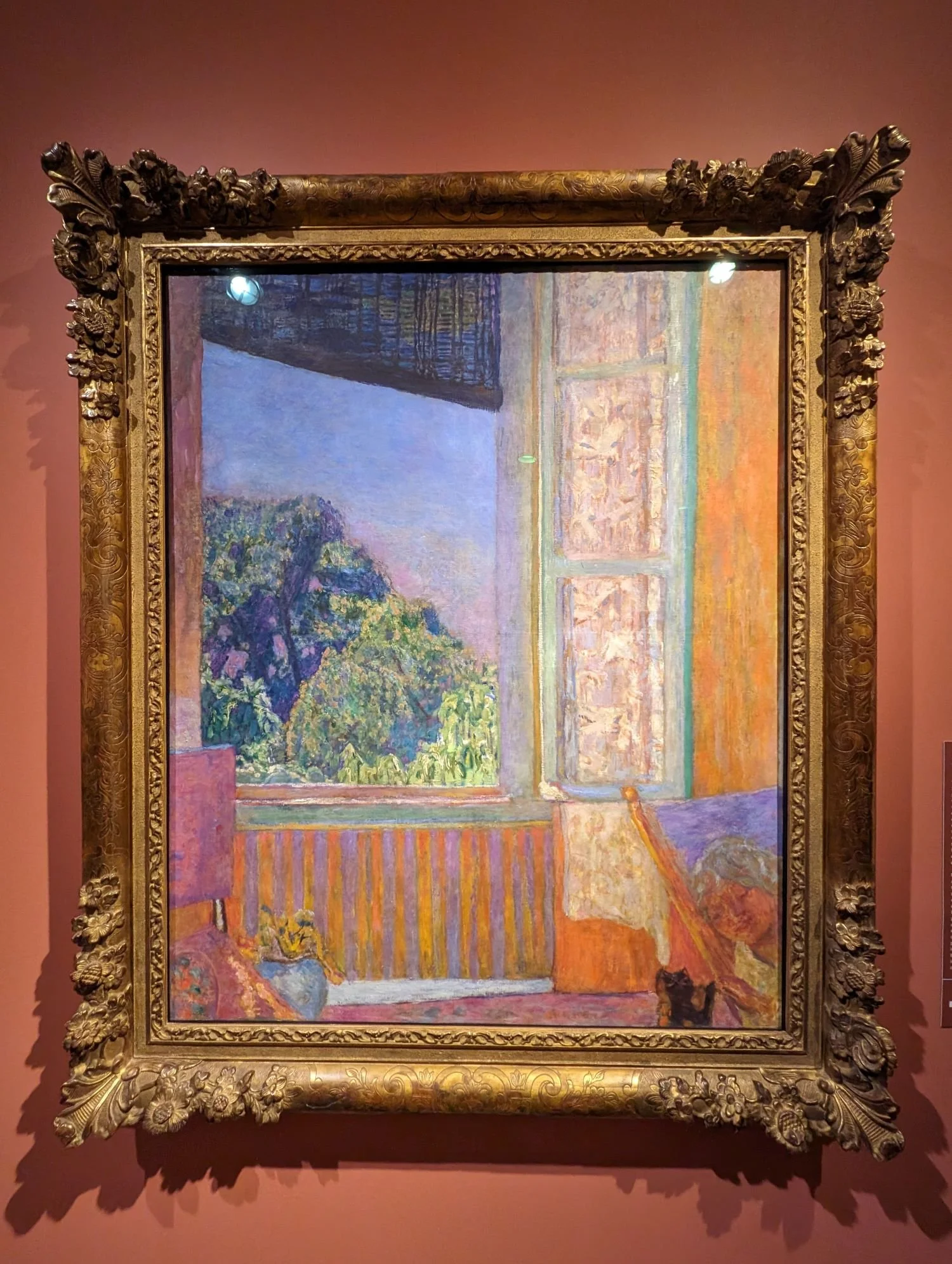Bonnard and the Places of Bonnard
Places as Moments
In a visit back home in April, I made sure to take Ole to the Getty. Apart from her love for the arts, and thus the total requirement of visiting this place, it is one of my own favorite places. I find my time there to be close to the furthest meaning of “outside.”
Part of this is the tram. It takes you there, detaches you, from the parking and world below to entrance the front steps of the museum. With its awesome granite buildings and design, it’s easier to forget your life below and before.
The Getty Center Gardens
Our visit was as lovely as I could have asked for, and, appropriately, I decided to leave with some books to really lock in what it was like to be there and carry the mood back with me to DC. One of the books was a new copy of The Poetics of Space, a book I had just returned to the library the week prior, a book about architecture, and one that I didn’t expect. I found a familiar but distant name on the shelves in the gift store: Giorgio Agamben, who is the author of a book I recall as possibly the most difficult book I’ve ever read, Homo Sacre. But that is a different letter, if at all.
On the shelves in the Getty Center, I discovered that he had written a short book of essays on visual arts, his own art critiques. I know enough to know that he is one of today’s most important philosophers, so I was compelled to pick it up.
Since finishing it, I have found the forward from the translator to be one of the most memorable sections, apart from a constant desire to be able to “see things” like how Agamben does and bring that sharper level of new-viewing to life.
The book’s title is Studiolo, or Studio, and the forward gives context to this slightly odd name. There, it states: ‘in Renaissance palaces, the studiolo was a small room to which the prince withdrew to meditate or read, surrounded by paintings he particularly loved” (2024, p. vii). Curating one’s environment seems to go back a bit.
Again, this is reminiscent of what I learned at the beginning of this “year of places” reading The Architecture of Happiness. It appears to be a common expectation that a good place of one’s own should reflect back to them what they determine to be good. One’s personal art studio is no different.
And so it was that this all came rushing back to me in May as Ole and I visited a show at The Phillips Collection in DC, “Bonnard’s Worlds.” Appropriately, as the US’s first contemporary art museum, Phillips was ahead of the game in collecting many pieces from Bonnard, and I hadn’t heard his name until this show. It was a beautiful curation. And I was drawn to the places.
The Artist’s Studio
Wandering through the rooms, I found this piece off to the side when I recalled the message from Studiolo’s forward: “The Artist's Studio.” I viewed the piece and wondered. What is there that the artist also shows the artist’s values? What does this place show me of this person? The blank walls help highlight the world outside the window, giving it an emphasized sense of life. There are materials for the creative work and space to do it. There is someone, unnamed in the artwork’s wall didactic, and thus room for loved ones or room for hospitable curiosity for strangers. The studio holds much.
As a reflexive moment, this place also demonstrates what is important to me as well. Not being a visual artist, I don’t have the same material; however, my library is ready and growing, and I have a large table for the hours of my creative work. A dear friend of mine was helping me with a book project one night. They printed out all the pages, and we spread them out on a large table to see how things could come together. It was there and then that I understood what my manuscript could really become. It was a late night in that studio.
The Open Window
There was another piece in the show that had a similar holding effect on me. It was a piece titled, “The Open Window,” near the center of the show. I viewed this one for a while.
This place holds a moment in time. There is a sentiment of safety and warmth here I think determined by the outside. With the window so close and prominent in the work, it gives a feeling of freshness, a “just-getting-back” to home feeling. The framing of the window takes me back to my own favorites in my life, a gaze through the large window in the bedroom of the first house I lived in after moving out of my parent’s. I am still grateful I made a video clip of that rainy day. Observing the rain from a safe, warm place on that big step of selfhood was all the wealth I had. I feel it again in this painting.
Thinking of this proposition that a curated place should reflect the individual, there is a moment to see how powerful observation can be in the sense that what one sees is a reflection of their values. In the same way that curation reflects one’s priorities, so too does attention curate observation. What one can notice signals something more profound of the viewer. In this case, at least, it is a callback to moments of my life and places where they happened.
Here, in a studio, place is to space as a moment is to time.
More soon,
Trevor
Now-reading affiliate links:


